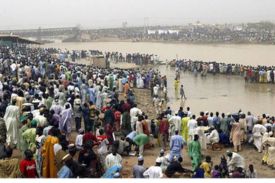
Title: “Celebrating Our Rich Cultural Heritage: A Tapestry of Tradition and Modernity”
Introduction: Our cultural heritage is a mosaic of traditions, practices, languages, art, and histories that define our identity as a society. It is an intricate tapestry woven from the threads of our ancestors’ lives, beliefs, and achievements. This heritage is not merely a relic of the past; it is a living, breathing aspect of our present and a foundation for our future. In this blog, we delve into the richness of our cultural heritage, exploring its significance, the challenges it faces, and the imperative of preserving it for generations to come.
Understanding Cultural Heritage: Cultural heritage encompasses tangible and intangible elements. Tangible heritage includes physical artifacts, monuments, landscapes, and historical sites, while intangible heritage comprises traditions, languages, music, dance, rituals, and cuisine. Together, these elements provide a sense of identity and continuity, linking us to our ancestors and providing a foundation upon which we build our societal values and norms.
The Significance of Our Cultural Heritage:
- Identity and Belonging: Our cultural heritage is a source of pride and identity, offering a sense of belonging to a community with shared origins and stories.
- Education and Knowledge: It serves as a repository of knowledge and wisdom, teaching us about the achievements and challenges of those who came before us.
- Unity and Diversity: Celebrating our diverse cultural heritage fosters mutual respect and understanding, promoting unity in diversity.
- Economic Value: Cultural heritage significantly contributes to the economy through tourism, arts, crafts, and the preservation of traditional skills.
Challenges to Preserving Cultural Heritage:
- Globalization: The forces of globalization, while connecting us in unprecedented ways, can also lead to cultural homogenization, threatening the uniqueness of local cultures.
- Conflict and Neglect: Wars, conflicts, and neglect have led to the destruction of invaluable cultural sites and the erosion of intangible cultural practices.
- Modernization: The rapid pace of modernization and technological advancement can sideline traditional practices and languages.
- Environmental Changes: Climate change and environmental degradation pose significant risks to natural and cultural landmarks.
Pathways to Preservation:
- Documentation and Digitization: Documenting and digitizing cultural artifacts and traditions ensure that they are preserved for future research and education.
- Education and Awareness: Incorporating cultural heritage education into school curricula and public awareness campaigns can foster appreciation and understanding among younger generations.
- Community Engagement: Empowering local communities to participate in the preservation of their cultural heritage ensures that efforts are sustainable and meaningful.
- Legal Protection: Implementing and enforcing laws to protect cultural heritage sites and practices from exploitation and destruction is crucial.
- International Cooperation: Collaborating with international organizations can provide the resources and expertise needed for preservation efforts.
The Role of Individuals: Every individual has a role to play in preserving our cultural heritage. By learning about our traditions, practicing and passing them on to the next generation, supporting local artisans, and advocating for the protection of cultural sites, we contribute to the safeguarding of our heritage. Participating in cultural festivals, learning traditional crafts, or simply exploring the stories and histories of our ancestors can deepen our connection to our heritage.
Conclusion: Our rich cultural heritage is a testament to the resilience, creativity, and spirit of humanity. It tells the story of who we are, where we have come from, and hints at where we may be headed. In a world that is rapidly changing, preserving our cultural heritage is more important than ever. It is not just about looking back with nostalgia; it is about carrying forward the essence of our identity, learning from the past, and building a future that honors the depth and diversity of our shared human experience. As guardians of this heritage, it is our collective responsibility to ensure that this tapestry of tradition and modernity is cherished, preserved, and passed on, enriched, to future generations.



